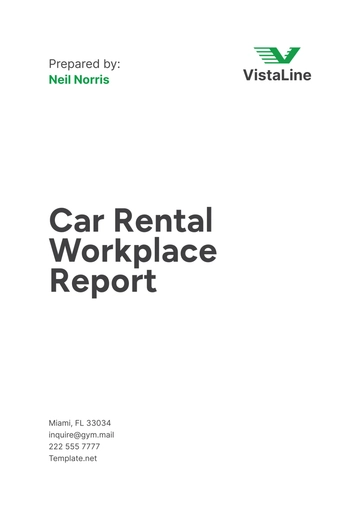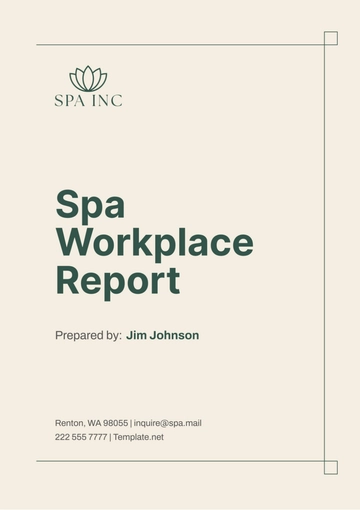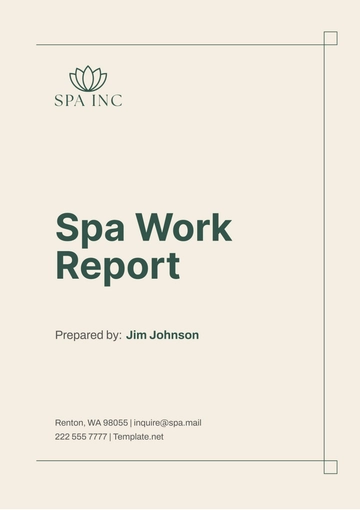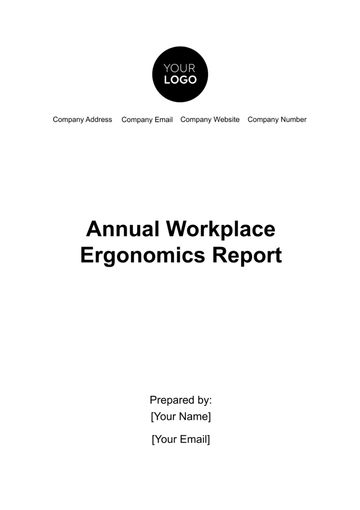Free Annual Workplace Ergonomics Report
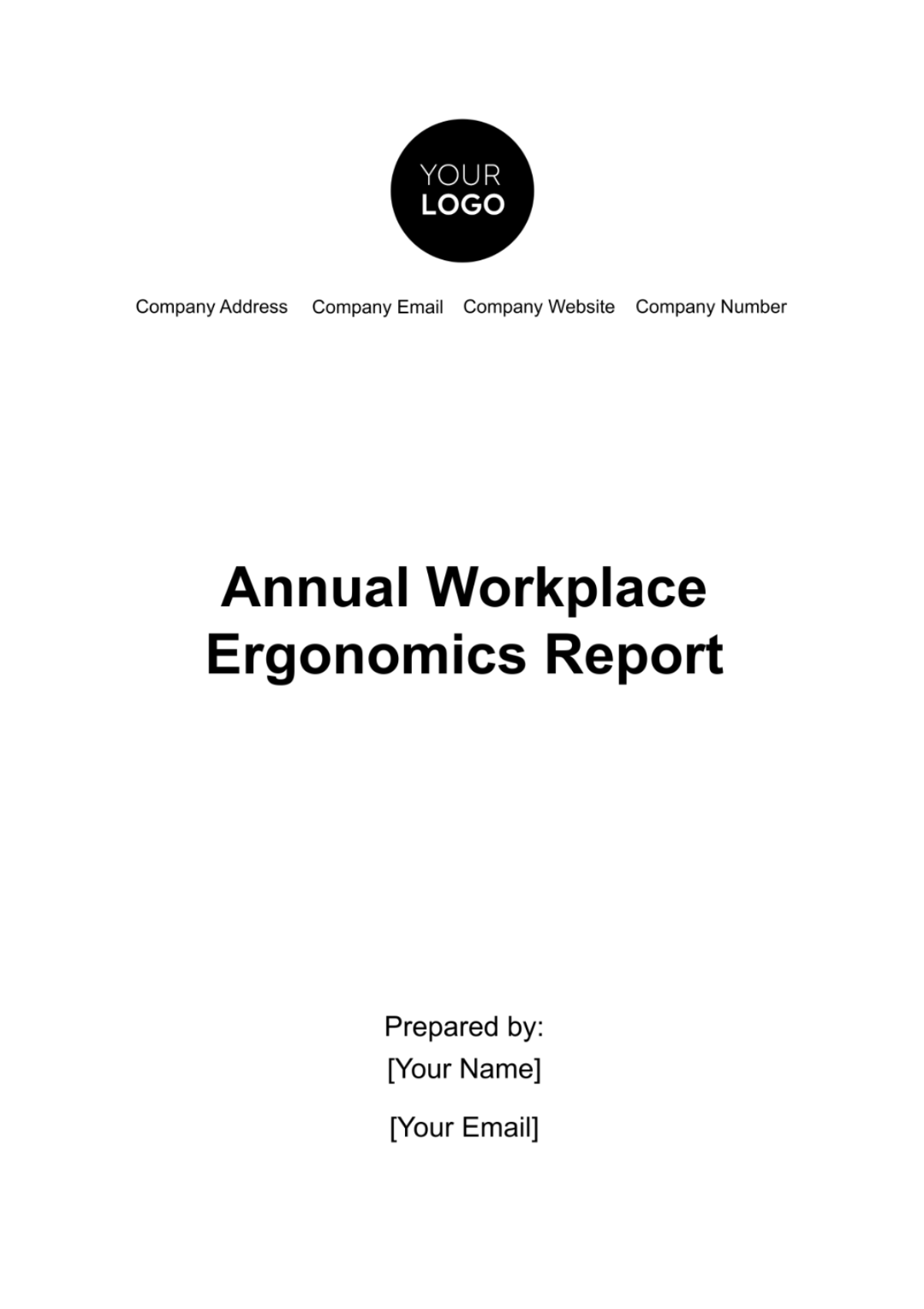
I. Executive Summary
Overview of the Report: This comprehensive report encapsulates the results of a detailed ergonomic assessment carried out across multiple departments at [Your Company Name]. It methodically examines the ergonomic practices currently in place, scrutinizing workstation setups, employee work habits, and existing ergonomic protocols. The report serves as a crucial tool for understanding and improving the overall ergonomic health of our workplace environment. |
Summary of Key Findings: The assessment unveiled notable ergonomic challenges, with a pronounced emphasis on issues within the customer service and warehouse departments. These areas witnessed a [25%] surge in employee discomfort complaints, signaling a pressing need for intervention. Predominant issues included poorly designed workstations and repetitive strain injuries, which have been linked to decreased employee productivity and increased absenteeism. |
Recommendations Overview: In response to these findings, the report proposes a series of targeted recommendations aimed at ameliorating the identified ergonomic shortcomings. Key suggestions include the redesign of workstation layouts to better suit the ergonomic needs of employees, coupled with the introduction of comprehensive ergonomic training programs. These initiatives are expected to significantly enhance workplace comfort, reduce injury rates, and improve overall employee well-being and efficiency. |
II. Introduction
Purpose of the Report: This report is carefully crafted to provide a thorough and in-depth evaluation of the current ergonomic standards within [Your Company Name]. Its primary objective is to scrutinize and understand the existing ergonomic environment, identifying key areas that necessitate improvement. By pinpointing these areas, the report aims to pave the way for enhancements that will foster a safer, more comfortable, and more productive workplace. |
Scope of the Report: Encompassing a comprehensive scope, this assessment delves into all major departments of the organization. It focuses primarily on the critical aspects of workstation setups and employee ergonomic practices, aiming to cover a broad spectrum of workplace scenarios. The intention is to provide a holistic view of ergonomic practices across the company, ensuring that no area with potential ergonomic risks is overlooked. |
Methodology: To ensure a robust and thorough analysis, the report uses a multifaceted methodology. This includes conducting detailed employee surveys to capture firsthand accounts of ergonomic experiences, rigorous evaluations of workstation setups to identify physical ergonomic challenges and a thorough review of injury reports. This triangulation of data sources is designed to yield a comprehensive understanding of the ergonomic health of the organization, offering insights that are both diverse and in-depth. |
III. Ergonomic Assessment Findings
Detailed findings from the ergonomic assessments conducted throughout the year.
A. Ergonomic Issues by Department
Department | Reported Issues | Type of Issue |
Customer Service | [40%] | Improper chair and desk height |
Warehouse | [35%] | Repetitive lifting tasks |
IT Department | [20%] | Inadequate screen positioning |
B. Overview of Findings
The ergonomic assessment conducted across the various departments of [Your Company Name] revealed a widespread presence of ergonomic risks, albeit to varying degrees. The customer service and warehouse departments emerged as the most concerning areas, with pronounced ergonomic challenges. These findings indicate a need for a targeted approach to address specific departmental ergonomic risks, with an emphasis on those areas most affected.
C. Department-Specific Issues
In the customer service department, a significant number of employees reported discomfort and strain, primarily attributed to inadequate ergonomic setups at their workstations. Issues such as poorly designed chairs and desks, which fail to support proper posture, were frequently cited. The warehouse staff faced challenges predominantly related to manual handling tasks. Reports highlighted concerns over repetitive lifting tasks, which have been linked to a higher incidence of musculoskeletal disorders among the warehouse workforce.
D. Trends and Patterns
Across the board, a notable trend was identified in the lack of widespread ergonomic awareness and training. Many employees were found to be unaware of basic ergonomic principles or how to adjust their workstations to fit their individual needs. There was a lack of regular ergonomic training sessions, which are crucial for educating employees on how to minimize risks associated with their specific work environments and tasks. This trend suggests an overarching need for an organization-wide initiative to elevate ergonomic awareness and knowledge among all employees.
IV. Analysis of Ergonomic Risks
An in-depth analysis of the ergonomic risks identified in the workplace.
A. Risk Severity and Frequency
Ergonomic Risk | Severity | Frequency of Occurrence | Affected Departments |
Poor Posture | High | Daily | Customer Service, IT |
Repetitive Strain | High | Weekly | Warehouse, Production |
Inadequate Equipment | High | Daily | Customer Service, Admin |
B. Risk Identification
The primary risks identified revolve around poor posture and repetitive strain injuries. Poor posture, predominantly observed in customer service and IT departments, is primarily due to inadequately designed workstations that do not support ergonomic standards. Repetitive strain injuries are most common in the warehouse and production departments, where tasks often involve repetitive motions or prolonged standing.
C. Risk Severity and Frequency
Both poor posture and repetitive strain injuries are classified as high-severity risks due to their potential to cause long-term health issues. Poor posture is a daily concern, especially in departments where employees spend prolonged periods sitting. Repetitive strain injuries vary from daily to weekly, depending on the specific job function and frequency of repetitive tasks.
D. Impact on Employees
These ergonomic risks have significant repercussions on employee health and productivity. Poor posture is closely linked with increased reports of back pain, neck strain, and other musculoskeletal issues, leading to discomfort and potential long-term health problems. Repetitive strain injuries manifest as joint pain, muscle strains, and in severe cases, conditions such as carpal tunnel syndrome. Beyond the physical impact, these issues contribute to reduced employee morale, increased absenteeism, and lower productivity, ultimately affecting the overall operational efficiency of the organization.
V. Current Ergonomic Initiatives and Their Effectiveness
Evaluation of the current ergonomic measures and their effectiveness.
A. Existing Measures
Current initiatives include basic ergonomic training during employee orientation and standard-issue office furniture.
Ergonomic Initiative | Description | Implementation Scope |
Basic Ergonomic Training | Training provided during employee orientation | Covers fundamental ergonomic practices |
Standard-issue Office Furniture | Standard ergonomic chairs and desks provided | Available in all general office area |
B. Effectiveness Assessment
These measures have been partially effective but are insufficient in addressing specific ergonomic needs of different roles.
Ergonomic Initiative | Effectiveness Rating | Feedback / Observations |
Basic Ergonomic Training | Partially Effective | Useful but does not address role-specific ergonomic needs |
Standard-issue Office Furniture | Standard-issue Office Furniture | Adequate for general use but not tailored to individual needs |
C. Areas for Improvement
Enhanced, role-specific ergonomic training and personalized workstation setups are needed.
Area for Improvement | Suggested Improvement | Expected Outcome |
Ergonomic Training | Develop role-specific ergonomic training modules | Develop role-specific ergonomic training modules |
Workstation Setups | Personalized ergonomic assessments for individual workstation setups | Enhance comfort and reduce risk of ergonomic injuries |
VI. Recommendations for Improvement
The recommendations for enhancing workplace ergonomics at [Your Company Name] are formulated based on thorough analysis and are aimed at addressing the specific issues highlighted in the report.
A. Proposed Ergonomic Solutions
Solution | Expected Benefit |
Adjustable Workstations | Reduced back and neck strain |
Ergonomic Lifting Training | Lower incidence of lifting-related injuries |
These workstations can be tailored to meet the individual ergonomic needs of employees, accommodating varying heights, seating preferences, and workstation layouts. In addition, ergonomic lifting training is suggested, particularly for warehouse and production staff, focusing on safe lifting techniques and the use of mechanical aids to prevent strain injuries.
B. Implementation Strategies
The implementation of these recommendations should be strategic and phased. For adjustable workstations, a department-wide rollout can be initiated, prioritizing areas where the highest ergonomic risk has been identified. This approach not only makes the transition manageable but also allows for assessing the effectiveness and employee satisfaction with the changes.
For ergonomic lifting training, integrating these sessions into the annual training calendar ensures that all relevant employees receive this essential training regularly. Additionally, incorporating these training modules into the onboarding process for new employees would ensure that they are equipped with the necessary ergonomic knowledge from the start.
C. Potential Benefits
The implementation of these ergonomic solutions is expected to yield significant benefits. Adjustable workstations are anticipated to reduce complaints related to back pain, neck strain, and other musculoskeletal issues, directly enhancing employee comfort and health. Ergonomic lifting training is expected to significantly reduce the incidence of lifting-related injuries in the warehouse and production areas.
Collectively, these improvements are likely to lead to increased overall employee well-being, reduced absenteeism due to ergonomic injuries, and enhanced productivity. Moreover, demonstrating a commitment to ergonomic health can positively impact employee morale and contribute to a culture of safety and well-being within the organization.
VII. Conclusion and Next Steps
The report culminates in a decisive summary and charts a clear course of action for [Your Company Name] in the upcoming year, focusing on elevating ergonomic standards in the workplace.
A. Summary of Conclusions
The assessment underscores a pressing need to enhance ergonomic practices and introduce more suitable equipment across various departments. It has become evident that while existing measures provide a basic level of ergonomic support, they fall short of meeting the diverse and specific needs of different roles within the organization. The findings highlight the critical impact of ergonomic factors on employee health, comfort, and productivity, emphasizing that ergonomic improvements are not just beneficial but essential for the overall well-being of the workforce.
B. Action Plan for Next Year
In response to these findings, a robust action plan has been formulated for the forthcoming year. This plan includes the implementation of the recommended ergonomic solutions, such as the introduction of adjustable workstations and specialized ergonomic training programs. These initiatives will be rolled out in a phased manner, ensuring a smooth transition and allowing for employee feedback and adaptation. The plan also includes targeted efforts to raise ergonomic awareness among employees, fostering a culture that prioritizes ergonomic health.
C. Follow-Up and Review Plans
To ensure the effectiveness and continual improvement of these initiatives, a structured review mechanism is proposed. Semi-annual reviews will be conducted to assess the impact of the implemented changes, with a focus on measuring reductions in ergonomic-related complaints and injuries. These reviews will provide valuable insights into the effectiveness of the new measures and will identify areas for further refinement.
Additionally, the review process will incorporate employee feedback, ensuring that the ergonomic initiatives are responsive to the actual needs and experiences of the workforce. This iterative approach will enable [Your Company Name] to continuously evolve its ergonomic practices, aligning them with the goal of creating a safer, healthier, and more productive workplace.
- 100% Customizable, free editor
- Access 1 Million+ Templates, photo’s & graphics
- Download or share as a template
- Click and replace photos, graphics, text, backgrounds
- Resize, crop, AI write & more
- Access advanced editor
Efficiently track and report on workplace ergonomics with Template.net's Annual Workplace Ergonomics Report Template. This editable and customizable tool provides a structured format for summarizing ergonomic assessments, highlighting trends, and recommending improvements. Utilize our intuitive Ai Editor Tool to tailor the report to your organization's specific needs effortlessly, ensuring optimal ergonomic conditions.
You may also like
- Sales Report
- Daily Report
- Project Report
- Business Report
- Weekly Report
- Incident Report
- Annual Report
- Report Layout
- Report Design
- Progress Report
- Marketing Report
- Company Report
- Monthly Report
- Audit Report
- Status Report
- School Report
- Reports Hr
- Management Report
- Project Status Report
- Handover Report
- Health And Safety Report
- Restaurant Report
- Construction Report
- Research Report
- Evaluation Report
- Investigation Report
- Employee Report
- Advertising Report
- Weekly Status Report
- Project Management Report
- Finance Report
- Service Report
- Technical Report
- Meeting Report
- Quarterly Report
- Inspection Report
- Medical Report
- Test Report
- Summary Report
- Inventory Report
- Valuation Report
- Operations Report
- Payroll Report
- Training Report
- Job Report
- Case Report
- Performance Report
- Board Report
- Internal Audit Report
- Student Report
- Monthly Management Report
- Small Business Report
- Accident Report
- Call Center Report
- Activity Report
- IT and Software Report
- Internship Report
- Visit Report
- Product Report
- Book Report
- Property Report
- Recruitment Report
- University Report
- Event Report
- SEO Report
- Conference Report
- Narrative Report
- Nursing Home Report
- Preschool Report
- Call Report
- Customer Report
- Employee Incident Report
- Accomplishment Report
- Social Media Report
- Work From Home Report
- Security Report
- Damage Report
- Quality Report
- Internal Report
- Nurse Report
- Real Estate Report
- Hotel Report
- Equipment Report
- Credit Report
- Field Report
- Non Profit Report
- Maintenance Report
- News Report
- Survey Report
- Executive Report
- Law Firm Report
- Advertising Agency Report
- Interior Design Report
- Travel Agency Report
- Stock Report
- Salon Report
- Bug Report
- Workplace Report
- Action Report
- Investor Report
- Cleaning Services Report
- Consulting Report
- Freelancer Report
- Site Visit Report
- Trip Report
- Classroom Observation Report
- Vehicle Report
- Final Report
- Software Report
